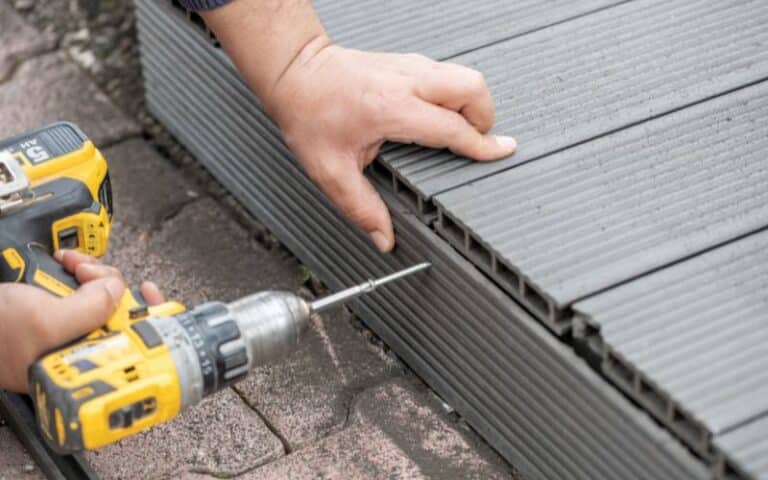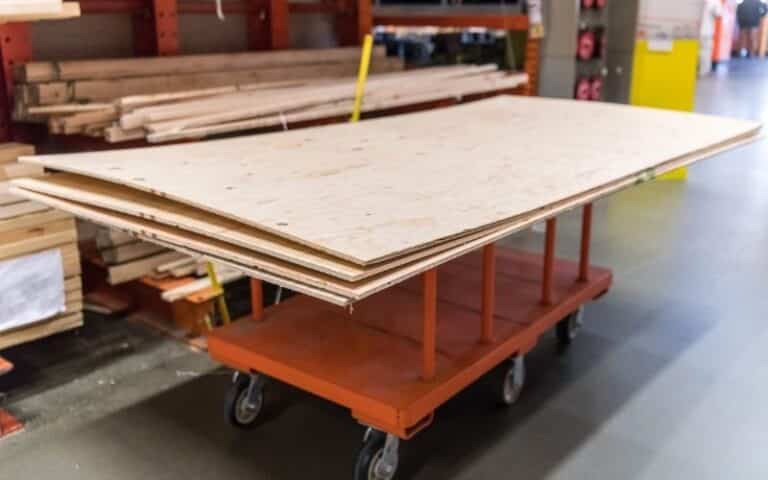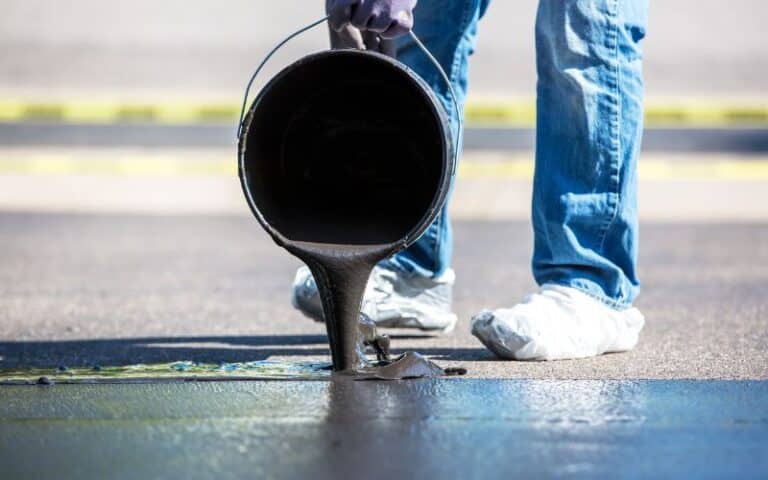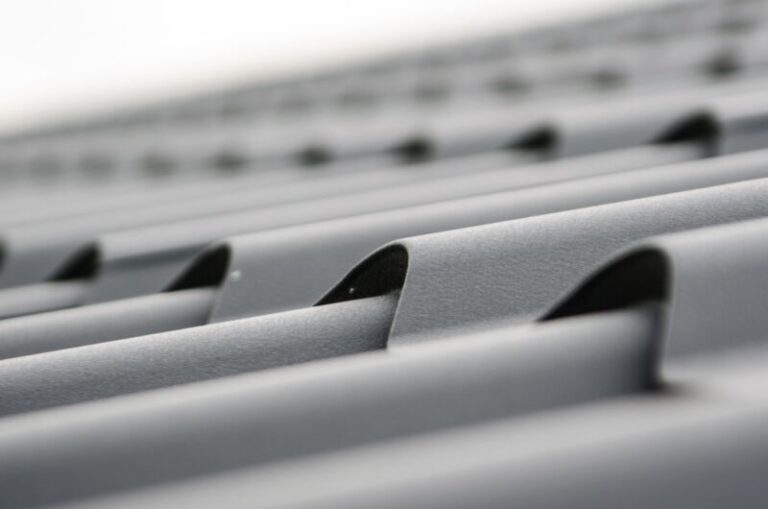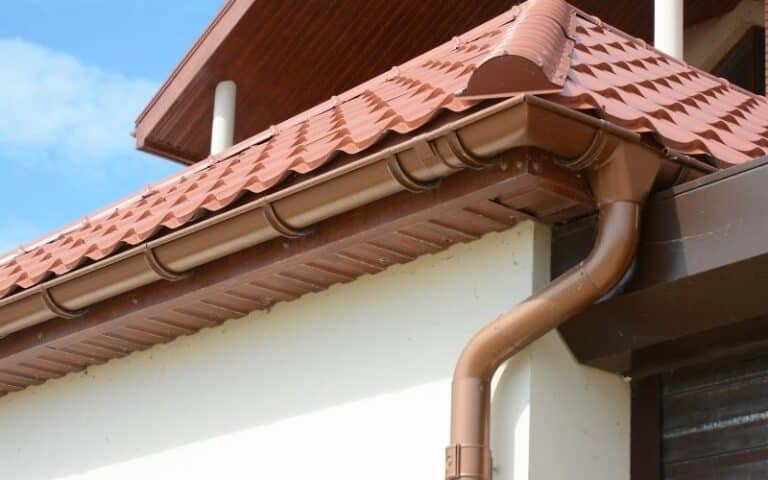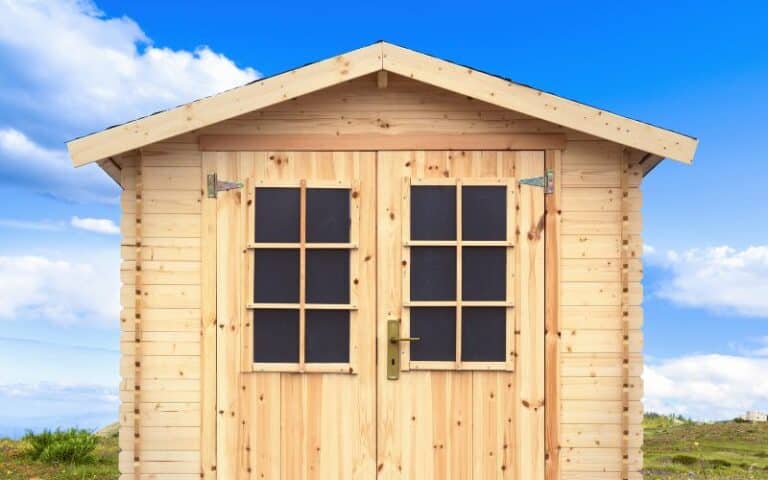If your floor is bumpy and you have plans to rip it off and install a new one, it might interest you to know there is a way to make your floor level again. You can level your floor using self-leveling underlayment.
The good thing about the self-leveling underlayment is that you can do it yourself, and your floor would be as good as new.
However, would it crack the floor if the self-leveling underlayment is improper?
Yes, if the self-leveling underlayment is faulty, it can lead to cracks on the floor. It is harder to fix at this stage as remedying it is quite expensive and would require intensive physical labor.
Ready for a Roofing Quiz?
What Causes Tec Self-Leveling Underlayment to Crack?
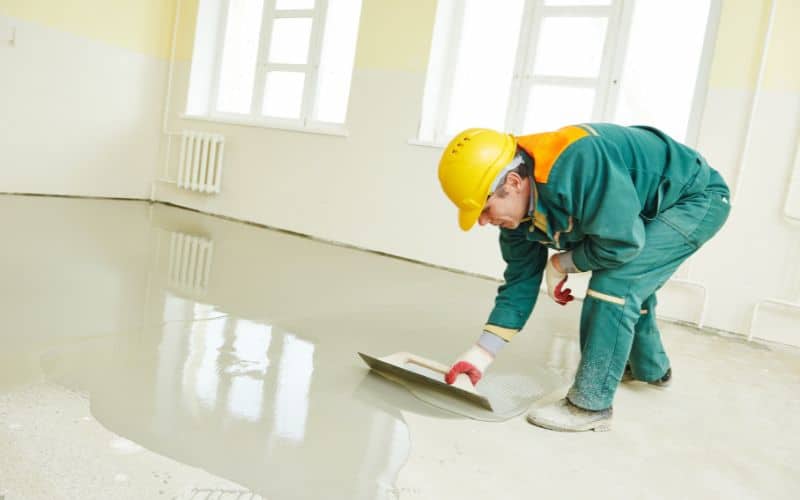
Many factors contribute to self-leveling underlayment cracking. As simple as self-leveling underlayment might seem if not done properly would lead to a whole new problem.
Here are some of the factors that might lead to self-leveling underlayment cracking:
#1. Not Adhering to the Manufacturer’s Instructions
Not following the guidelines given by the manufacturer is one of the major causes of self-leveling underlayment cracking.
For example, not priming your floor before pouring in the self-leveling compound.
The manufacturer clearly stated in the guideline that you should prime your floor before pouring can lead to self-leveling underlayment cracking.
Also, using the wrong material or tool while leveling your floor, as opposed to the manufacturer’s guidelines, can cause self-leveling underlayment cracking.
For instance, using the wrong graded plywood underlayment on your plywood can cause cracks.
#2. Improper Mixing
Here is another major cause of self-leveling underlayment cracks. The ideal mixing format allows the cement to sit for a while and ensures it is completely wet before applying it.
But in some situations, the cement is spread quickly without giving it room to be homogeneous, causing the areas where it is to set at a varying rate and leading to cracks.
#3. Temperature
Cracks can appear on your self-leveling underlayment if the humidity is too low, the temperature too high, or influenced by other weather conditions.
#4. Existing Cracks
Another cause of self-leveling underlayment cracks is the presence of existing cracks before the self-leveling.
Leveling a floor with already existing cracks would only lead to web cracks on your floor.
If you insist on applying a self-leveling compound on your cracked floor, make use of a crack isolation membrane to separate the new underlayment from the cracked surface.
Tec Self-Leveling Underlayment Reviews
There are several tec self-leveling underlayments available in the market. Here are some of the tech-level leveling underlayment and their reviews:
#1. Tech level 100 Self-Leveling Underlayment
You can use the tech-level self-leveling underlayment to level the floor before installing carpet, resilient floors, tile, and other floorings.
It is a high-quality self-leveling underlayment that attains higher than 4000 psi compressive strength. After application, it starts leveling up the uneven floor in minutes.
#2. Tech level 125 Self-Leveling Underlayment
Tech level 125 assists in removing installation issues like crumbling, staining of resilient floors, and bond failure.
It is a high-quality self-leveling underlayment that attains up to 4000 psi compressive strength.
Tech level 125 also helps keep your floor leveled before installing wood, tiles, resilient floors, carpet, and other flooring types.
Since it has an amazing physical resilience, you can use it in residential buildings with floor joists up to 61 cm.
#3. Tech level 150 Self-Leveling Underlayment
This tech level is a high-quality self-leveling underlayment with up to 4300 psi compressive strength.
Some amazing features of tech level 150 are amazing flow retention property, crack resistance, and excellent compressive strength.
You can use it to level your floor before installing wood, resilient floors, tiles, carpets, and other types of flooring.
You can also use it to get rid of installation issues like staining of resilient floors, bond failure, and crumbling.
How to Prevent Self-Leveling Underlayment from Cracking?
Ensuring your self-leveling underlayment is free from cracking can be quite simple. Just ensure the self-leveling underlayment is perfect.
Here are a few methods to avoid cracking:
- To avoid cracking, follow the manufacturer’s instructions and ensure you use the correct products.
- Also, mix your self-leveling underlayment properly and evenly according to the instructions. Ensure you distribute the mixture evenly so the area can be set at the same pace.
- Likewise, fill all the gaps, spaces, and openings in the room to avoid seepage while pouring the self-leveling compound—prime your floor before application.
- Ensure that the room temperature is well regulated and in line with the manufacturer’s instructions. A too high or low temperature can lead to cracks.
- If the floor cracks before using the self-leveling underlayment, make sure to use a crack isolation membrane to keep the new product separated from the cracked surface.
- Finally, follow the recommendations on the self-leveling underlayment minimum thickness required by your floor.
How Do You Seal Self-Leveling Compound?
You should seal your floor before pouring the self-leveling compound. Sealing promotes proper bonding between the subfloor and the leveling compound.
Also, it ensures that the liquid from the self-leveling compound doesn’t permeate the floor.
It equally makes sure that the floor doesn’t move at too fast a rate. To prime your floor before pouring self-leveling compound:
- Firstly, clean your floor to be as neat and stain-free as you can manage.
- Use a damp rag or a sponge to eliminate dust and dirt.
- Then prime your floor using a primer (acrylic bond) diluted with water.
Tips on Tech Self-Leveling Cracking
If the self-leveling underlayment is bad and your floor has started showing crack signs, as bad as it might look, do not freight. Here is some pro advice on how to correct self-leveling mistakes:
#1. Examine the Problem
The first step to correcting your self-leveling underlayment crack is knowing the problem. It would help direct you on the next step to take.
If the problem isn’t that complicated, you can sand it to fix the problem. However, if it is complicated, you must remove it and start it up again.
While at it, ensure you wear the proper gear to protect you from dust inhalation, as dust would be flying around during the removal process.
#2. Remove the Self-Leveling Compound
This action should depend on the result of your assessment. If the problem requires you to remove only a part of the self-leveling compound, you would need a chisel.
Using a chisel, level the floor by lightly removing any bumpy pieces. Then sand the floor immediately.
However, if you must remove all the self-leveling compounds, use a hammer to break as many as possible.
Then scrape off the remnants with a paint scraper. Make sure to wear protective equipment while at it.
#3. Prepare and Apply the New Self-Leveling Compound
Ensure to follow the manufacturer’s instructions while mixing the compound to avoid a scenario where the self-leveling compound cracks again. Mix it properly and use the right product.
After mixing the self-leveling compound, apply it to your primed floor immediately.
Make sure it spreads to all the floor parts, depending on your previous assessment. Then, give it time to dry; you can walk on it after 24 hours.
#4. Seek the Help of a Professional
If you have tried everything within your power, all to no avail, the next thing to do is seek the help of a professional.
Nothing is embarrassing about it. It only shows that the work is beyond your means.
Pros and Cons of Self-Leveling Compound
Here are some of the merits and demerits associated with making use of self-leveling compounds:
| Pros | Cons |
|---|---|
| It is easy to use | It drys at a fast rate |
| It creates a smooth surface | It does not provide stability to the subfloor or tiles |
| You can use it on any surface | It can’t bond with the subfloor if there is dust or dirt |
Conclusion
The self-leveling underlayment is very instrumental when it comes to leveling uneven floors. It is also easy to use.
However, make sure to follow all the given instructions to avoid self-leveling underlayment cracking.

